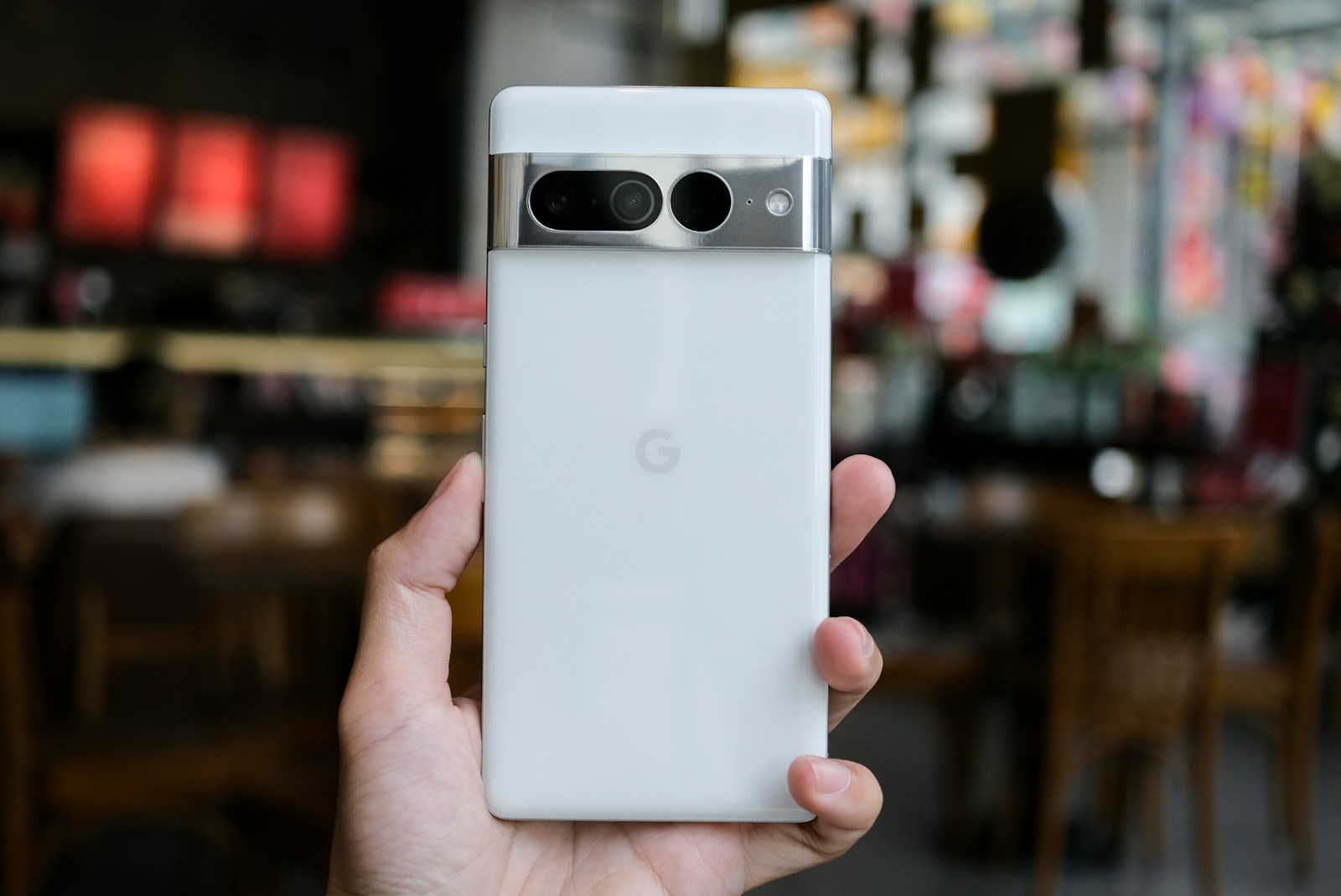As a tech writer specializing in smartphones, tablets, and other smart devices, it’s no surprise that I’ve become the go-to person for friends and family when it comes to buying a new phone. For years, my recommendation has consistently been the Google Pixel series. Known for their reliability and outstanding cameras, these phones seemed to offer a slice of the Apple experience in the Android world. However, my recent experience with the Google Pixel 7 Pro has profoundly shaken my faith in Google’s flagship line.
Early Days with Google Pixel: A Love Story
My journey with Google Pixel started not with the very first model, but with the Pixel 3 series. The Google Pixel 3a XL was my entry point into what would become a deep appreciation for Google’s approach to mobile technology. Despite its midrange status, the Pixel 3a XL performed exceptionally well, boasting a camera that outperformed all expectations and battery life that cured my “battery anxiety.” The Pixel 3a XL was not just a device; it was a reliable partner that managed to stand the test of time, its camera tech laying the foundation for future Pixel models.
The Decline: Death by a Thousand Cuts
Fast forward to the present, and the narrative has changed drastically with my acquisition of the Google Pixel 7 Pro. Initially, the phone seemed to live up to its pedigree. The camera was stellar, the battery life robust, and the overall performance solid. However, as weeks turned into months, small software bugs began to surface, slowly transforming my user experience from seamless to frustrating.
One of the first major issues was with Wi-Fi connectivity—my Pixel 7 Pro would frequently disconnect from the internet without warning, requiring a manual reset of the network settings to reconnect. This issue was merely the beginning of a cascade of software glitches that would plague my experience.
Frustrations Mount: Usability Concerns
More irritating than the connectivity issues were the interface bugs. Simple actions like swiping up to close an app became a gamble—sometimes effective, sometimes not. The ‘Recent Apps’ menu seemed to have a mind of its own, complicating what should have been straightforward navigation. These might seem like minor annoyances individually, but together, they amounted to a significant disruption of the basic usability of a $900 flagship smartphone.
Perhaps the most glaring issue was the unlock animation. It’s visually appealing, sure, but it doesn’t actually lock the screen until the animation has completed. This delay often resulted in unintentional inputs, like adjusting the volume or pausing a podcast, simply because I had put the phone in my pocket before the animation finished. It’s a clear oversight in design that prioritizes form over function.
Samsung Does It Better: A Comparison
In contrast to my growing frustrations with the Pixel, Samsung’s offerings in the Android market have been increasingly impressive. From the hardware robustness of the Galaxy Note series to the software polish of the Galaxy S23, Samsung has demonstrated a mastery of the Android ecosystem that Google seems to struggle with. Their devices not only match but often exceed the expectations set by their price points, showing a progression in quality and user experience that Google has failed to maintain.
Looking Forward: Can Google Win Me Back?
Despite these setbacks, I am not ready to give up on Google entirely. The upcoming Android 14 presents a new opportunity for Google to address these persistent issues. However, the clock is ticking, and with each new release, my patience—and loyalty—are tested.
In conclusion, while the Google Pixel 7 Pro has its merits, the accumulation of small yet impactful bugs has tarnished not only the user experience but also my confidence in Google’s ability to deliver a product that lives up to the standards set by its predecessors. As we look to the future, one thing is clear: Google has significant ground to make up if it hopes to restore faith in its flagship series.
Samsung’s Rise in the Android World
In the shadow of Google’s struggles, Samsung has risen to become a dominant force in the Android marketplace. Their approach combines innovative hardware with software that is both reliable and user-friendly. The Galaxy S23 series, in particular, has set a new standard for what consumers can expect from a high-end smartphone. Its seamless integration of top-tier hardware with refined software offers a stark contrast to the issues plaguing the Pixel 7 Pro.
Software Superiority
Samsung has not only matched Google’s software capabilities but has exceeded them in many areas. One of the most notable improvements has been in software stability and fluidity. Unlike my experiences with the Pixel 7 Pro, where software bugs frequently disrupt the user experience, the Galaxy S23 offers a smooth and consistent performance. This reliability is crucial for building trust with consumers who depend on their devices for everyday tasks.
Hardware Innovations
Beyond software, Samsung has also excelled in hardware innovation. The Galaxy S23’s camera system, for example, includes features that rival professional cameras, allowing users to capture stunning photos and videos. The build quality and design of Samsung devices also reflect a commitment to excellence that has become increasingly important as smartphones become more integral to personal and professional life.
The Google Dilemma: Falling Behind
As Samsung continues to innovate and refine its products, Google faces a significant challenge. The Pixel series, once hailed for its clean, bloatware-free interface and excellent cameras, now seems to lag behind. The issues with the Pixel 7 Pro are symptomatic of a broader problem within Google: a disconnect between hardware capabilities and software performance.
Losing Consumer Confidence
The recurring software issues have not only frustrated users but have also led to a decline in consumer confidence. For many, a smartphone is an investment in efficiency and connectivity. When that investment starts to detract from daily productivity due to technical glitches, the fallout can be significant. Google’s challenge is not just to fix the bugs but to rebuild trust that has been eroded over successive generations of Pixels.
Opportunities for Redemption
Despite the current setbacks, Google still holds significant potential to turn its fortunes around. The integration of AI and machine learning into its devices could pave the way for innovative features that anticipate and cater to user needs more effectively than ever before. Moreover, Google’s stewardship of the Android operating system gives it a unique capability to optimize hardware and software integration in ways that other manufacturers cannot replicate.
Future Outlook: What Google Must Do
Looking forward, Google has several key areas to address if it wants to regain its position at the forefront of smartphone innovation:
1. Prioritize Quality Control: Google must enhance its testing and quality assurance processes to ensure that new devices are free from the software bugs that have plagued recent models.
2. Embrace Transparency: Being open with consumers about issues and the steps being taken to address them can go a long way in restoring faith. Transparency in communication acknowledges the problems and reassures users that solutions are in progress.
3. Innovate with Purpose: Google needs to leverage its technological prowess not just for adding new features but for enhancing user experience in meaningful ways. Innovations should focus on real-world usability and making daily interactions with the device more intuitive and less frustrating.
4. Strengthen Ecosystem Integration: Google should capitalize on its ecosystem, ensuring that devices work seamlessly with one another and with the array of services Google offers. This could be a key differentiator, making the entire suite of Google products more appealing.
The Road to Redemption for Google’s Pixel Series
As Google faces an uphill battle to reclaim its reputation in the smartphone arena, the company must not only address the technical issues but also innovate in a way that resonates with consumers. The path forward involves a strategic overhaul of their product development and marketing approach.
Enhancing User Experience Through Software Innovation
Google has always excelled at software innovation, particularly with its Google Assistant and integration of AI technologies. However, the company needs to ensure that these innovations enhance the user experience in tangible ways. For example, AI could be used to predict and solve software bugs before they become apparent to the user, or to optimize battery life based on the user’s habits.
Predictive Problem-Solving
Imagine a Pixel phone that can predict when you might encounter connectivity issues and automatically switch to the best available network. Or a device that learns your usage patterns so well it can extend battery life during your busiest days. These are the types of innovations that could set Google apart in a crowded market.
Enhanced Customization and Control
Google could also offer more customization options that allow users to tailor their devices to their specific needs. This could include more advanced control over app permissions, security settings, and even the physical interaction with the device, such as customizable gestures that enhance accessibility and ease of use.
Strengthening Hardware Capabilities
While Google’s Pixel cameras have often been lauded for their quality, the company needs to ensure that all aspects of the hardware are on par with or superior to competitors. This includes investing in more robust and innovative display technology, better battery materials, and perhaps most importantly, a more reliable and intuitive interface design.
Display and Battery Innovations
Future Pixel models could feature adaptive displays that change their refresh rate based on what the user is doing, conserving battery life without sacrificing performance. Battery technology could also leap forward with faster charging capabilities and longer life spans, making the devices more appealing to power users and frequent travelers.
Revamped Design Philosophy
Google could benefit from a revamped design philosophy that emphasizes both aesthetics and functionality. A sleeker, more modern design that does not compromise on durability could help attract a broader audience. Additionally, incorporating environmentally friendly materials could appeal to the growing demographic of eco-conscious consumers.
Rebuilding Trust Through Marketing and Customer Service
A key element of Google’s strategy must be rebuilding trust through transparent marketing and exemplary customer service. This means being upfront about the capabilities and limitations of their devices and providing exceptional support when issues arise.
Transparent Marketing
Google should consider more transparent marketing practices that accurately represent the capabilities and potential limitations of their devices. This would help set realistic expectations and prevent the kind of disillusionment that has been seen with the Pixel 7 Pro.
Exemplary Customer Support
Enhancing customer support by providing timely, effective solutions to user problems is crucial. This could include offering a more streamlined warranty process, faster service for repairs, and perhaps a dedicated support line for troubleshooting common issues.
Conclusion: A New Chapter for Google Pixel
The challenges faced by the Google Pixel 7 Pro provide valuable lessons for Google as it aims to innovate and improve its smartphone lineup. By focusing on predictive software innovation, robust hardware updates, and rebuilding trust through better customer relations, Google has the opportunity to regain its footing in the smartphone market.
The future of the Google Pixel series depends on Google’s ability to adapt and respond to the needs of its users. With the right changes, the Pixel line has the potential to once again be at the forefront of smartphone innovation, offering users a seamless blend of technology, design, and user-centric features.


